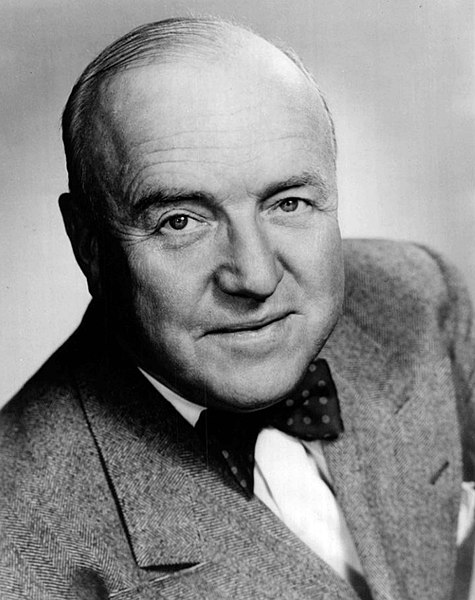William Clement Frawley was an American Vaudevillian and actor best known for playing landlord Fred Mertz in the sitcom I Love Lucy. Frawley also played "Bub" O'Casey during the first five seasons of the sitcom My Three Sons and the political advisor to the Hon. Henry X. Harper in the film Miracle on 34th Street.
Frawley in 1951
Left: Ford Sterling as Keystone Cops police chief (seated); in the background just to the right of the Keystone Cops actor above Sterling is Frawley in "In the Clutches of the Gang" (1914)
With James Cagney in Something to Sing About
The I Love Lucy cast (clockwise): William Frawley, Desi Arnaz, Lucille Ball, Vivian Vance
I Love Lucy is an American television sitcom that originally aired on CBS from October 15, 1951, to May 6, 1957, with a total of 180 half-hour episodes spanning six seasons. The series starred Lucille Ball and her husband Desi Arnaz, along with Vivian Vance and William Frawley, and follows the life of Lucy Ricardo (Ball), a young, middle-class housewife living in New York City, who often concocts plans with her best friends and landlords, Ethel and Fred Mertz, to appear alongside her bandleader husband, Ricky Ricardo (Arnaz), in his nightclub. Lucy is depicted trying numerous schemes to mingle with and be a part of show business. After the series ended in 1957, a modified version of the show continued for three more seasons, with 13 one-hour specials, which ran from 1957 to 1960. It was first known as The Lucille Ball–Desi Arnaz Show, and later, in reruns, as The Lucy–Desi Comedy Hour.
Lucy and Ricky climb in the Alps during their 1956 trip to Europe.
Cast members from left, standing: William Frawley, Desi Arnaz, seated: Vivian Vance and Lucille Ball
Mike (left) and Joe Mayer played Little Ricky as a toddler.
Lucille Ball with John Wayne on the set of the 1955 episode "Lucy and John Wayne"







